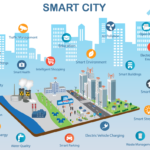Introduction:
In an age where environmental consciousness is paramount, the construction industry is embracing sustainable practices to build a greener and more resilient future. Sustainable construction goes beyond mere compliance with regulations; it aims to minimize the industry’s ecological footprint and preserve natural resources while creating long-lasting and energy-efficient structures. Join us as we explore the principles and benefits of sustainable construction and how it is reshaping the way we build.
- Energy-Efficient Building Designs:
At the core of sustainable construction lies a focus on energy efficiency. From optimizing building orientation to harnessing natural lighting and ventilation, sustainable designs reduce reliance on artificial lighting and climate control systems. Incorporating passive solar techniques and high-performance insulation further reduces energy consumption, resulting in significant cost savings and a reduced carbon footprint.
- Green Building Materials:
Sustainable construction relies on eco-friendly building materials that have a minimal impact on the environment. From recycled steel and reclaimed wood to low-VOC paints and adhesives, these materials not only conserve natural resources but also promote better indoor air quality for occupants. Integrating green materials ensures healthier living spaces and demonstrates a commitment to sustainability.
- Net-Zero and Renewable Energy Integration:
An ambitious goal within sustainable construction is achieving net-zero energy consumption. Buildings designed with energy-efficient features and renewable energy sources, such as solar panels and geothermal heating systems, can produce as much energy as they consume over a specified period. These environmentally responsible practices lead to reduced carbon emissions and long-term cost savings for building owners.
- Water Conservation and Management:
Sustainable construction prioritizes water conservation and efficient management of water resources. Low-flow fixtures, rainwater harvesting systems, and smart irrigation technologies are just a few examples of water-saving strategies. By reducing water waste and implementing efficient water use practices, sustainable buildings contribute to water resource preservation and sustainability.
- Waste Reduction and Recycling:
Traditional construction generates a significant amount of waste. Sustainable construction, however, emphasizes waste reduction and recycling. Adopting construction waste management plans and repurposing materials in future projects minimize the impact on landfills and promote a circular economy. By diverting waste from landfills, sustainable construction plays a crucial role in reducing environmental pollution.
- Life Cycle Assessment:
Sustainable construction embraces life cycle assessment (LCA) to evaluate a building’s environmental impact from inception to demolition. By considering the entire life cycle of a structure, including material extraction, construction, occupancy, and end-of-life, designers can make informed decisions to reduce environmental burdens and promote resource-efficient designs.
- Green Certifications and Standards:
To ensure adherence to sustainable principles, green certifications and standards have emerged in the construction industry. LEED (Leadership in Energy and Environmental Design) and BREEAM (Building Research Establishment Environmental Assessment Method) are prominent examples of internationally recognized certifications. Achieving these certifications demonstrates a commitment to sustainability and serves as a benchmark for environmentally responsible construction.
- Resilient Design for Climate Change:
Sustainable construction incorporates resilient design strategies to adapt to the challenges of climate change. As extreme weather events become more frequent, buildings must be designed to withstand and recover from natural disasters. Resilient design not only protects the occupants but also preserves the integrity of the structure and reduces the need for extensive post-disaster reconstruction.
Conclusion:
Sustainable construction practices are paving the way for a more environmentally conscious and resilient future. By integrating energy-efficient designs, green building materials, and renewable energy technologies, the construction industry is taking significant strides towards reducing its environmental impact. Embracing sustainability not only benefits the planet but also creates healthier and more efficient living and working spaces for generations to come.


